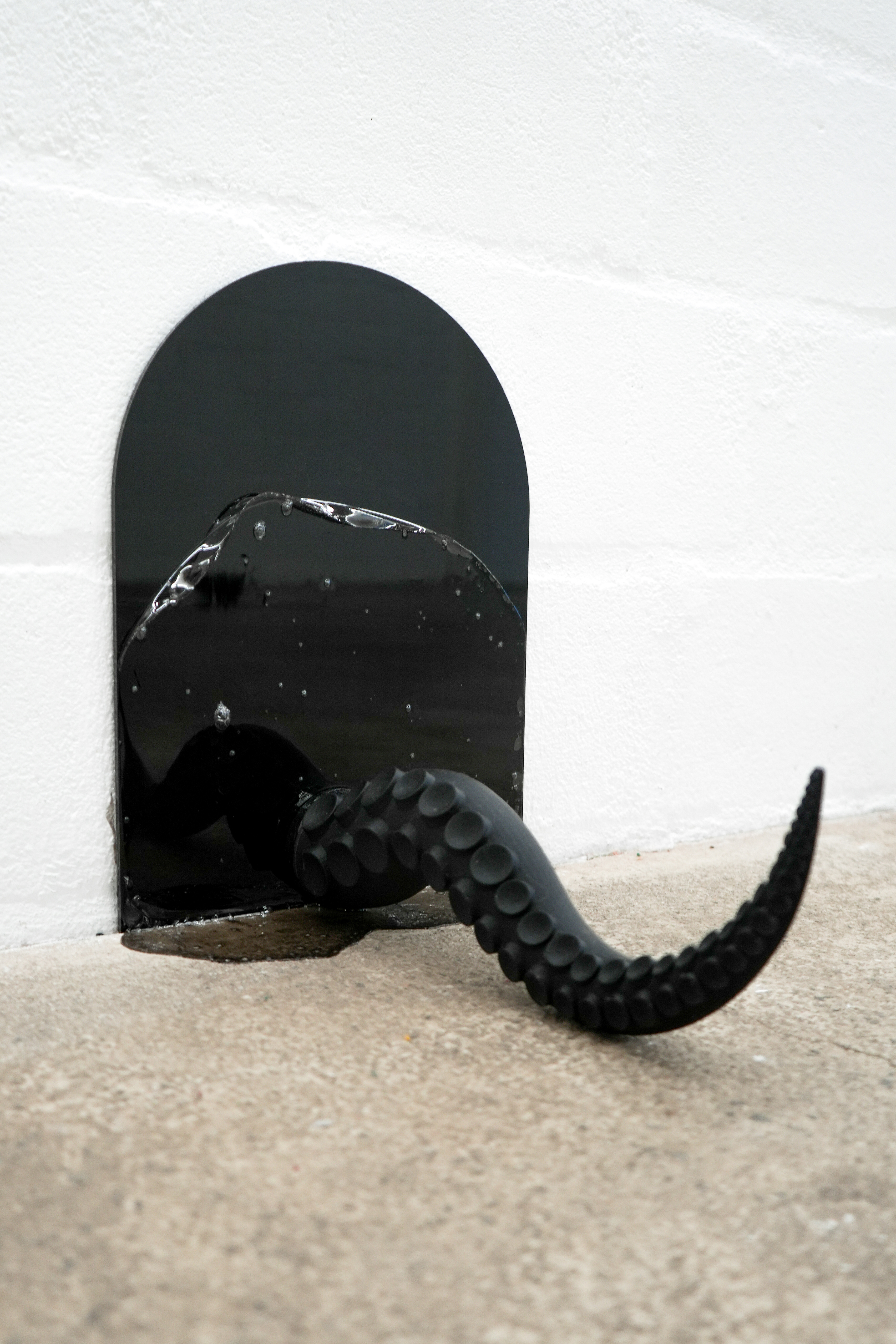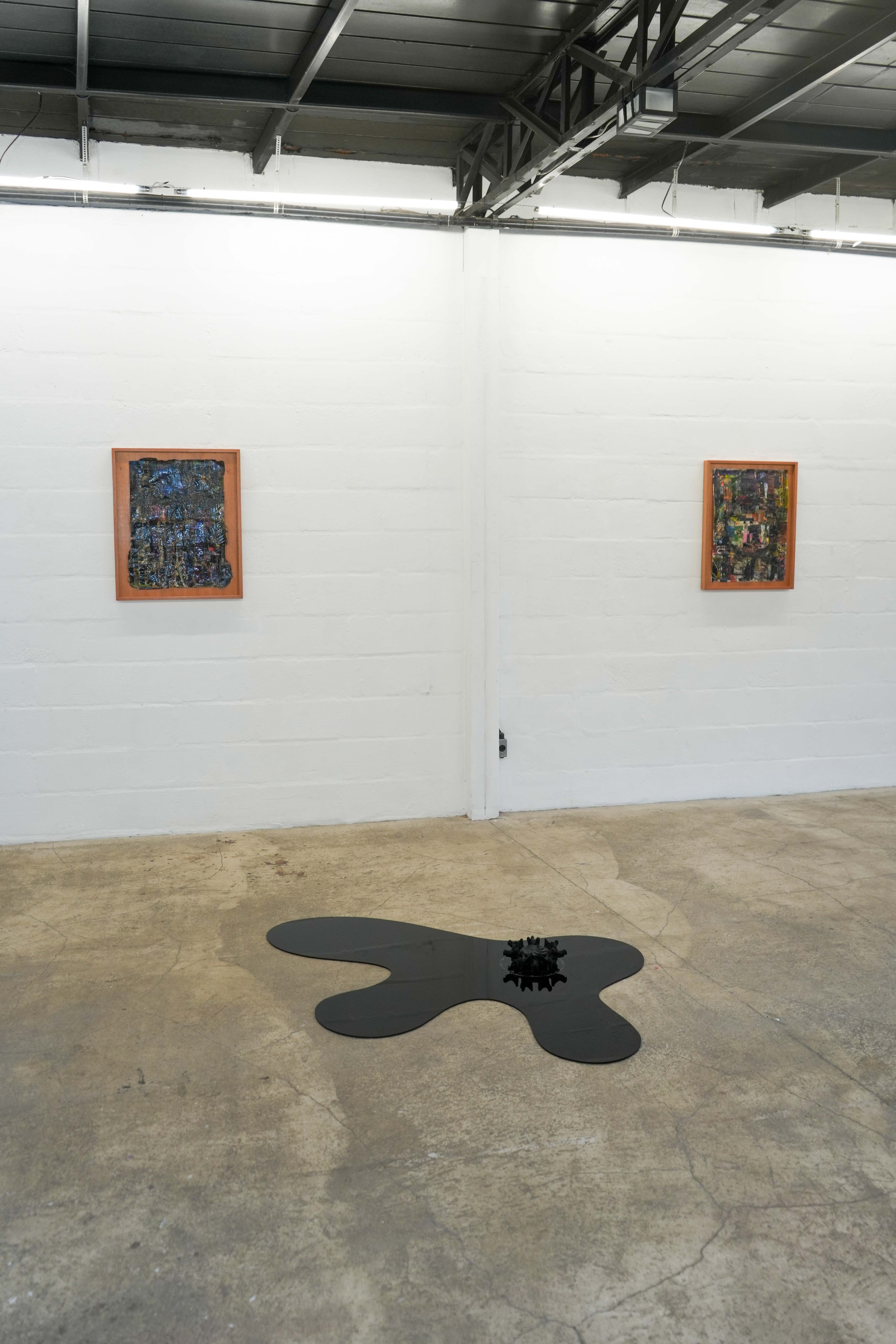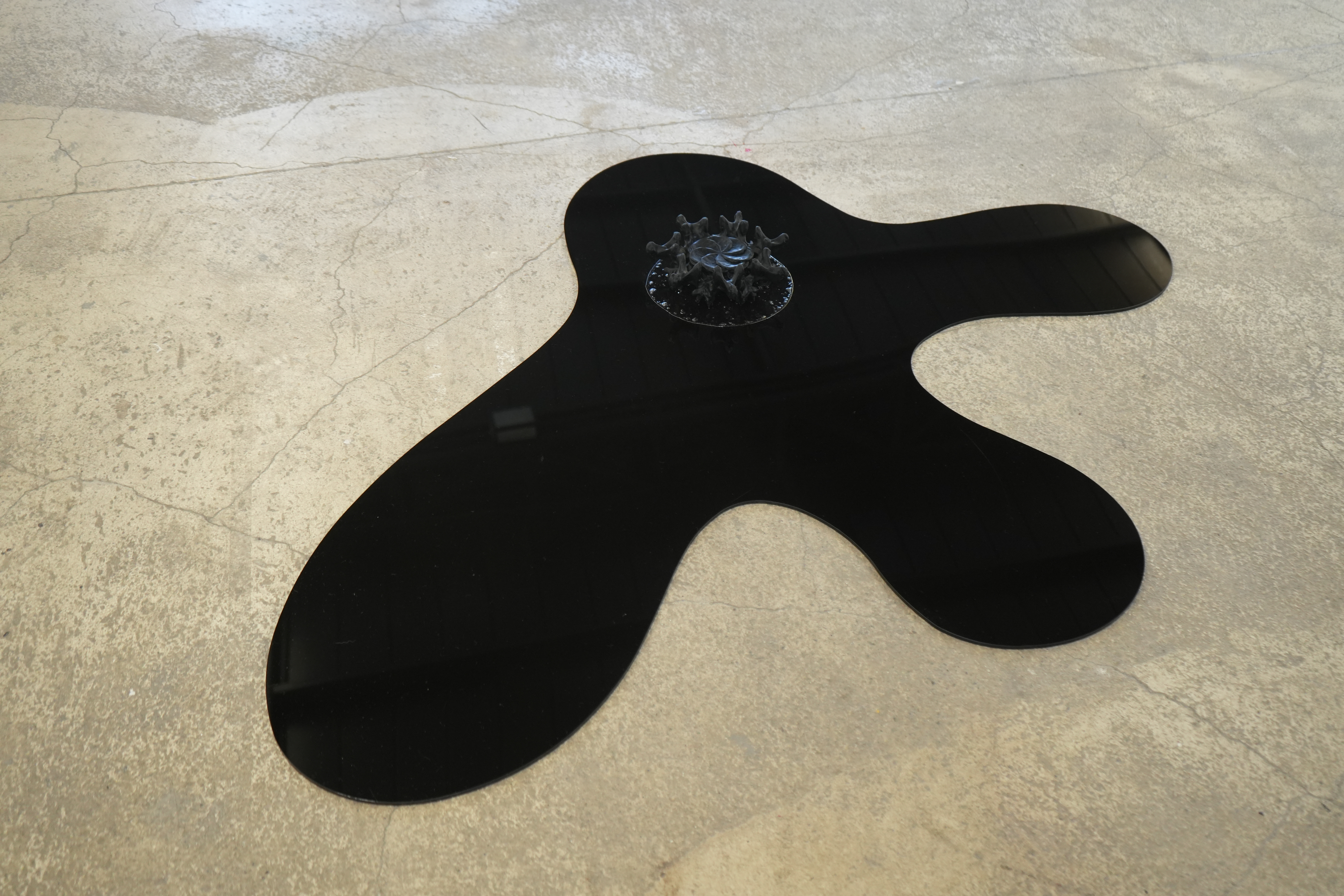








Nem só o copro veste a alma
The sculptural works Sobre Criar Oceanos I-IV and Portal I were created for the exhibition ‘Nem só o corpo veste a alma’ (Not only the body wears the soul) currently on view at Tropigalpão. It celebrates the second anniversary of this multidisciplinary space in Gloria, a historical neighborhood in the centre of Rio. Tropigalpão has come to be a symbol of the downtown renaissance that has sprung up in the area.
The exhibition brings together the work of five emerging Brazilian artists: Alexandre Baltazar, Pauline Batista, Anderson Borba, Maria Konder, and Samara Paiva. The title of the show indicates a quest for possibilities of existence beyond the human realm. Within the selected works there are paintings, sculptures and installation proposals that are suitable for these universal questions in relation to the body, matter and human experience in the face of an abstract and impermanent universe.
The Body as a Paradox (excerpt)
critical text by Carol Carreteiro
In his book “Philosophy of Care”, Boris Gross differentiates the idea of body with the idea of skin. According to the author, our desires are felt and discovered through the interaction of skin, as this is our physical interface with the world and the fundamental basis of all perception. The body is the reference point for displacement in space/time, and encompasses the psychoanalytic notion of the “spark of inner life”, as Jung puts it, which is what defines us as unique individuals, and therefore, with characteristic desires. The body can be analyzed from the inside out, and from the outside in. The West presupposes the outside in as a departure point— we are endowed with a materiality, a chemistry, that can be manipulated by medicine and altered by procedures. Consequently, suffering and pain are framed as states that can be manipulated by substances, such as medicine, for example.
...
Pauline Batista's acrylic and tentacles speak directly about the idea of materiality, as Boris Groys addresses in the conception of skin: the interface as a chemical substance, where the grotesque can, metaphorically, represent the other, and again, what is not recognizable.
…
The fundamental idea that surrounds all the works presented is very well condensed by Mark Fisher: the strange, or “uncanny”, as the author puts it, "always operates by processing the outside through the gaps and impasses of the inside.”